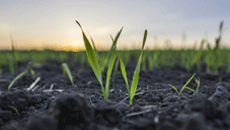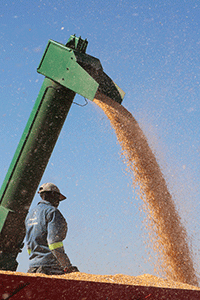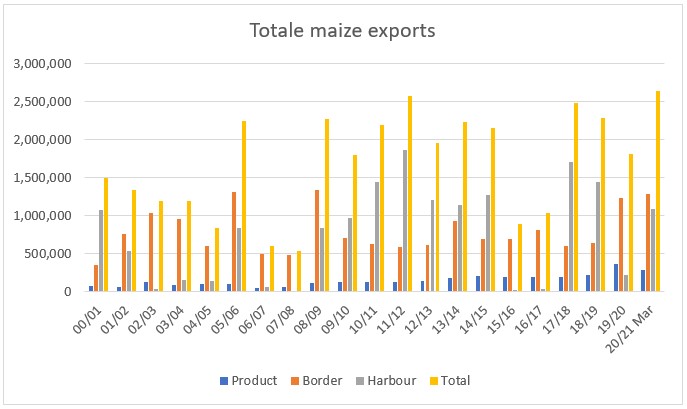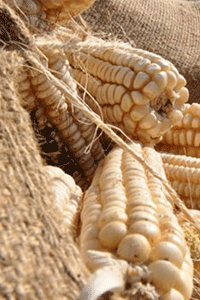

A new edition to the organisation's communication strategy, the Grain Pulse will keep members informed with short updates relevant to Grain SA and the grain production environment as a whole.
Meetings with relevant stakeholders and role players through the Barley Industry Forum are ongoing in order to resolve the various issues surrounding the storage of grains. In some of the regions additional plans were put in place to procure. It is expected that the farmers in the Swartland will not plant a large amount of barley this year, based on risk consideration and planning.
A recent JSE-webinar on the various differential calculations garnered a lot of support for Johann Strauss’s model. Progress with alternative methodologies regarding the location differential was made between the JSE, UFS and Grain SA. Still a lot of motivation and discussion needed.
During the week, Grain SA again met with chemical companies and the Registrar of Act 36 about the possibility of an emergency registration to enable aerial spraying of glyphosate just before harvesting. This practice is already common for weed control just before maize is harvested, but is not yet labelled as such. Companies are now waiting to see if they can meet the requirements of an emergency registration.
An independent pollination expert has been appointed to assist Grain SA members with the disputes where some maize cultivars have not been fully pollinated. The independent reports were sent to seed companies for consideration and discussion.
Next week, members of Grain SA's Maize Specialist Working Group will convene meetings with the major agricultural companies in the West that receive grain. This is an attempt to resolve grey areas that were experienced with grading last year as well as to improve grading consistency.
Enquiries from Vietnam was received regarding the import of maize and soybeans, whilst the Chinese Government sent through a last minute change regarding the protocol for soybean exports. This is being finalised and should there be any surpluses, China will be able to purchase. Maize exports are going well, with tenders from South Korea still to be awarded. A first ever shipment of Canola was exported to the EU in the past month.
A farmer’s day was held in Delmas where the researchers from the SASRN (South African Sclerotinia Research Network) presented their results from field trials conducted over the past two seasons. See the link to the video here https://youtu.be/V_BPStv3Hjw.

The harvesting process for oilseeds is progressing very well and is nearing completion; soybean and sunflower hectares should be mostly harvested within the next two weeks. Rain occurred in certain areas last week causing a few delays however this should not drastically hinder producers. The maize is generally still quite wet and producers will possibly only start harvesting maize in a few weeks. Producers in the eastern parts of the country have started harvesting maize here and there. Winter cereal plantings in the Western Cape commenced and widespread rain fell to great gratitude. Extreme amounts of rain occurred this week in some parts of the Overberg / Southern Cape.
View the full agricultural production conditions as of 4 May 2021 here
Click on the image above for a complete update

The harvest season for summer crops commenced and producers are working hard to get the harvest into the silos. According to the National Crop Estimates Committee, the expected maize crop is 16 million tons. This has raised new questions, in terms of possible exports, logistics systems and the export capacity of the country's ports.
In the current marketing season from 1 May 2020 to 31 March 2021, total exports, according to SAGIS figures, are already at 2,64 million. The NAMC’s supply and demand estimate for the 2020/21 marketing season's exports is 2,82 million tons, which will be a new record export figure for the country. By the end of March 2021, 1,2 million tons of whole maize had been exported to neighbouring countries.
For the new 2021/22 marketing year, the NAMC's export estimate, given the estimated 16 million ton harvest, is at 2,8 million tons and similar to the marketing year that is almost past. Historically, excluding product exports, the largest whole maize exports through border posts were 1,32 million tons in 2008/09 and the largest port exports, 1,86 million tons in 2011/12. Theoretically, this is a capacity of 3,18 million tons, based on these two figures. This excludes product exports and competition with other products. According to the current estimate, it would appear that there will be enough capacity to be able to export, especially if similar bulk exports to neighbouring countries materialize.
The expected production for Sub-Saharan Africa currently appear promising and should be kept in mind in terms of exports.

Source: SAGIS
Within the industry, there is a major impetus to sharpen rail transport logistics in the short term with further prospects for improvement in the long term. Although progress has been slow, Transnet has confirmed that up to September 2021, 700,000 tonnes of capacity has been made available for maize exports. The business rules were given to the exporters last week. Although most of the exports are currently done by road, efforts will be made to shift more to rail if it proves to be favourable within their business models. Plans have already been made for additional storage capacity close to the port. To make exports as efficient as possible, the industry, Transnet and the port operators will meet on a bi-weekly basis from next month.
In the long term, it is one of the objectives of the Agricultural Masters Plan to increase rail transport logistics together with the capacity as well as the efficiency at ports. In the entire transport logistics system, it remains one of the most important factors, as it is the end point and to a large extent determines the capacity for and efficiency of exports. Some of the objectives include to deepen the Maydon Wharf (RBT and Agri Port sections) - from the current 9,56m and 10,5m respectively to 13m. This will give these areas in the Durban port the opportunity to handle 50,000 ton vessels. At Island View (DBS and BPO sections) the aim is to deepen the harbour from the current 12,5m to 16m. This will provide the opportunity to manage 70 000 - 80 000 ton shipping vessels. Should this happen, the import and export efficiency will be increased, further providing additional opportunities for more effective remote export management. Proposals for extending the current lease agreements with the private port operators period would, should it materialise, provide the private sector with the necessary incentive to invest in infrastructure.
The expansion of export markets and the improvement in efficiency of the system remain a focus area within Grain SA and the necessary attention is given to this at various levels.

With more and more reports of unauthorized trucks loading grains on farms, we kindly wish to draw your attention to note the following points: